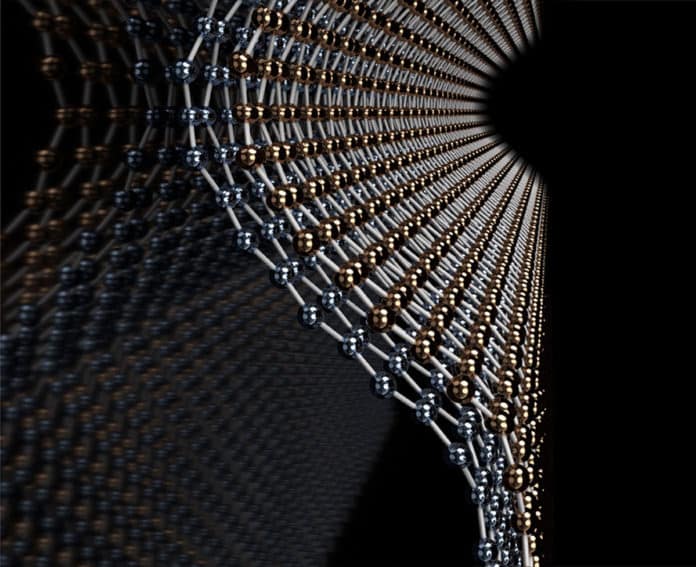By combining atomic-scale experimentation with computer modeling, scientists at the University of Illinois have solved a riddle that eluded scientists since graphene was first isolated: How much energy it takes to bend multilayer graphene?
Graphene is the name for a honeycomb sheet of carbon atoms. Considered as one of the key ingredients of the future, the graphene is so thin that it is flexible.
Most of the studies have had focused on the development of nanoscale electronic devices. Yet, many technologies- from stretchable electronics to tiny robots so small that they cannot be seen with the naked eye – require an understanding of the mechanics of graphene, particularly how it flexes and bends, to unlock their potential.
Edmund Han, a materials science and engineering graduate student, said, “The bending stiffness of a material is one of its most fundamental mechanical properties. Even though we have been studying graphene for two decades, we have yet to resolve this very fundamental property. The reason is that different research groups have come up with different answers that span across orders of magnitude.”
To make the bent graphene, scientists fabricated individual atomic layers of hexagonal boron nitride, another 2D material, into atomic-scale steps, then stamped the graphene over the top. Using a focused ion beam, scientists cut a slice of material and imaged the atomic structure with an electron microscope to see where each graphene layer sat.
They then developed a set of equations and simulations to calculate the bending stiffness using the state of the graphene bend.

Measuring the bending stiffness of graphene, they obtained 1.2–1.7 eV for a monolayer. What’s more, they found that the bending stiffness of a few-layer graphene decreases sharply as a function of bending angle, tuning by almost 400% for trilayer graphene.
They drapped several graphene layers over a step just one to five atoms high; they created a controlled and precise way of measuring how the material would bend over the step in different configurations.
Pinshane Huang, a materials science and engineering professor, said, “In this simple structure, there are two kinds of forces involved in bending the graphene. Adhesion, or the attraction of atoms to the surface, try to pull the material down. The stiffer the material, the more it will try to pop back up, resisting the pull of adhesion. The shape that the graphene takes over the atomic steps encodes all the information about the material’s stiffness.”
Mechanical science and engineering professor Elif Ertekin said, “The study systematically controlled exactly how much the material bent and how the properties of the graphene changed. Because we studied graphene bent by different amounts, we were able to see the transition from one regime to another, from rigid to flexible and from plate to sheet behavior.”
“We built atomic-scale models to show that the reason this could happen is that the individual layers can slip over each other. Once we had this idea, we were able to use the electron microscope to confirm the slip between the individual layers.”
According to scientists, the outcomes could have implications for the creation of machines that are small and flexible enough to interact with cells or biological material.
The study is published in the journal Nature Materials.
